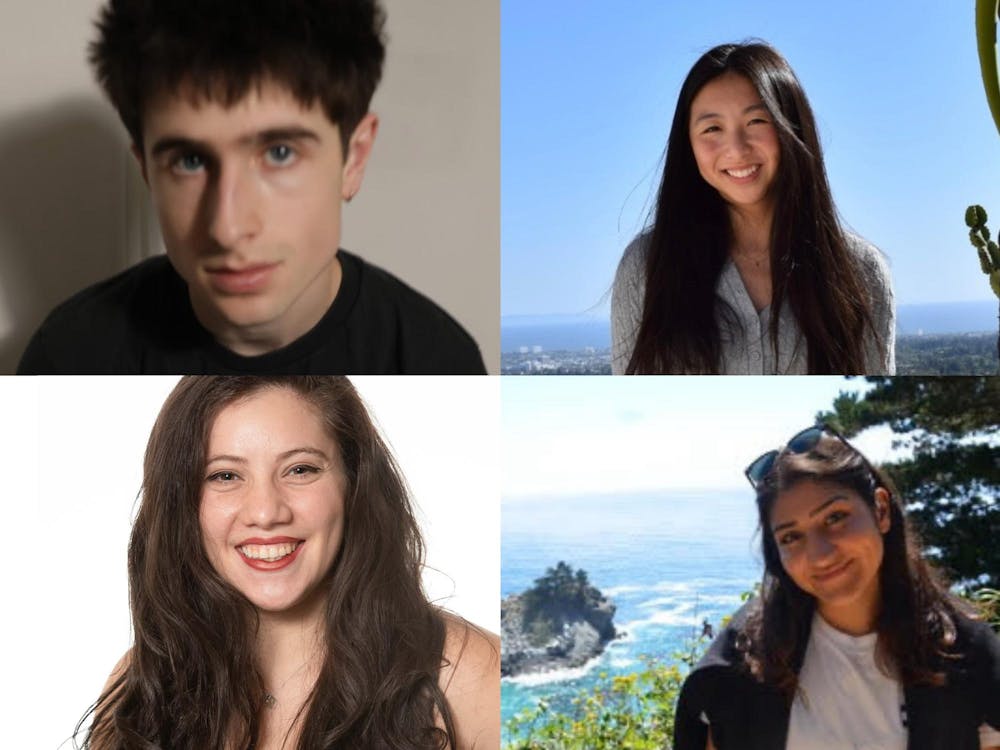Brown’s Open Curriculum, with 96 concentration tracks and certificates, gives students the option to study a wide variety of subjects during their time on campus. But some students opt to specialize their experience even further.
Through Brown’s independent concentration program, students can develop their own major that’s not offered at the University and “cannot be studied cohesively within a standard concentration,” according to the program’s description.
Independent concentrators must create an in-depth proposal outlining their goals and curriculum before receiving approvals from the College Curriculum Council. The process allows students to fully reflect on the proposed coursework, ensuring depth, breadth and progression.
The Herald talked to four “IC-ers” — as students in the concentration are colloquially known — to learn about the range of fields and experiences the program encompasses.
Peter Robin ’25: Applied Digital Media
For nearly a decade, Peter Robin ’25 has performed rap and hip-hop. Now, as a part of his Applied Digital Media capstone project — a required component of every independent concentration — Robin will promote his album, “The Art Thief.”
The Applied Digital Media concentration combines Robin’s interests in music production, marketing and communications, he explained.
The album’s music, inspired by “underground hip hop, cloud rap, ambient (and) trap,” is the capstone for his music concentration, an existing concentration at Brown.
To promote “The Art Thief,” Robin plans to utilize social media and track search engine optimization engagement and user metrics. He is also considering “experience economy” marketing strategies — such as installing gumball machines around campus that dispense QR codes linking to his work.
He will also create the album’s cover, which features a photo of him “stealing a painting,” with the painting being “the actual cover art.”
“I’m really proud of where (the album) is sonically,” Robin said. “Being able to match the actual artistic component with worthy promotion” is something the independent concentration has “definitely given me the tools to do.”
Emily Lin ’26: Human-Computer Interaction
Upon learning that Emily Lin ’26 is concentrating in Human-Computer Interaction, people often ask her, “’Is that, like, AI?’”
“AI is such a big trend right now,” said Lin, a Herald tech team member. “So that’s the first thing that people think of when (it comes to) humans and technology, but it’s more than that.”
The Human-Computer Interaction concentration focuses on “understanding users to better build products that fit their needs and simplifying that technology-human interaction,” Lin told The Herald. She has taken courses in computer science, cognitive and psychological sciences to “bridge that gap” between computers and their users, she added.
Lin leads a team in the Design for America club that is helping implement a chatbot on the website of Onward We Learn, a Rhode Island-based college readiness program. She also researches at Brown’s Human-Computer Interaction Lab.
“When I was writing my (Brown admissions) essay, I said I want to explore the intersection of business, technology and design,” Lin said. “That’s exactly what this independent concentration has allowed me to do.”
Kaely Michels-Gualtieri ’25: Novel Historiographies
Kaely Michels-Gualtieri ’25, a 35-year-old resumed undergraduate student, enjoys using her unique perspective — as a trapeze artist, a RUE student and someone who has lived in 15 countries — to generate new knowledge.
Before her time at Brown, Michels-Gualtieri performed with Cirque du Soleil, Ringling Brothers and Big Apple Circus. After experiencing a concussion and a back injury, she found that doing a reduced course load with the independent concentration allowed for “a lot of flexibility surrounding the disability,” she said.
“The independent concentration is what I’d want to do anyway,” Michels-Gualtieri told The Herald. “But it’s also an incredible benefit for somebody who’s coming back from a pretty big injury.”
Novel Historiographies is a concentration that explores the intersection of history and literature. Historiography is the “written narrative of history,” Michels-Gualtieri explained, noting her interest in the narrators through whom history is told.
Michels-Gualtieri added that her role as a performer was “based (on) creating fiction for the audience.” Novel Historiographies gives her an “amazing opportunity” to combine the worlds of performing and academics.
Through her independent concentration, Michels-Gualtieri also focuses on archival research, which has led to a paper on the manipulations of the script of Shakespeare’s Othello across three eras.
Getting the paper published was a “dream … come true” that she might not have been able to accomplish in a traditional concentration, Michels-Gualtieri said.
Anita Zahiri ’26: Translational Regenerative Medicine
Even before arriving at Brown, Anita Zahiri ’26 considered pursuing an independent concentration. Some of the first courses she took at Brown, such as the first-year seminar BIOL 0150D: “Techniques in Regenerative Medicine: Cells, Scaffolds and Staining,” made her eager to “create something of my own at Brown concentration-wise,” she said.
Zahiri, who is a member of the Program in Liberal Medical Education, plans to become a physician. Her independent concentration “explores the intersection between the rapidly advancing field of regenerative medicine and also the principle of health equity,” she told The Herald.
Regenerative medicine is a “rapidly advancing” field that utilizes the creation of living, functional tissue to repair native cells or organs that have been impacted by congenital defects, trauma or disease, Zahiri explained.
By including translational research in her concentration, Zahiri aims to “spark a conversation” between emerging regenerative medicine technologies and prevalent community health issues.
Beyond the introductory biology courses, Zahiri has taken courses in public health, anthropology and science, technology and society. Outside of the classroom, Zahiri works with a lab at Rhode Island Hospital’s Cardiovascular Research Center and has experience with clinical research.
“It’s been nice to be able to narrow down my academic focus and the courses I engage with to gain more of a background” in regenerative medicine, she said.

Kate Rowberry is a senior staff writer at The Herald.





